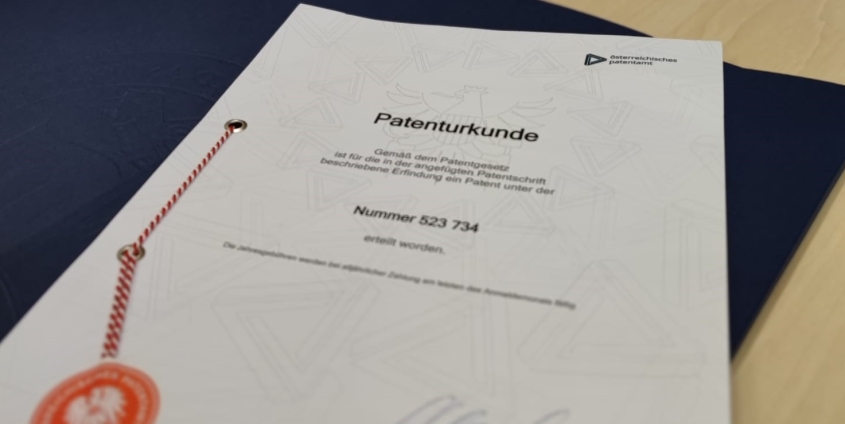Helping us to understand where a robot is located: The University of Klagenfurt is granted a patent for a new modular sensor fusion technology
Along with the inventors, Christian Brommer and Stephan Weiss, the dronehub in Klagenfurt has recently been granted another patent. Weiss and Brommer perform research in the Control of Networked Systems (CNS) group with a focus on how to improve localization and navigation methods for robots and small helicopters.
“Our flying robots, or drones, as they are often called, are equipped with various sensors. These sensors include cameras, pressure sensors, magnetometers, GPS sensors, and more. Based on the data obtained by these sensors, we can apply our algorithms to calculate precisely where in the world the helicopter is located at any given time”, Christian Brommer explains. Working with Stephan Weiss, the head of the CNS team and his thesis supervisor, Brommer has developed a new technology that performs this localization with multiple sensors in a robust, efficient, and modular manner.
Sensors usually have their own calibration states which are estimated during runtime when using localization methods. “These additional states improve the accuracy of the robot’s localisation”, Brommer goes on to explain. But this also poses a challenge: Each state that is added to the system extends a mathematical matrix. In general, the data from the various sensors usually does not reach the computing unit at the same time. Because of this, conventional methods consume unnecessary computing power. The new technology makes it possible to process isolated segments of the matrices that correspond solely to the sensor that is providing information at that very moment. Christian Brommer describes the concept: “Imagine that due to a high volume of different sensor data, we would normally need a large matrix. As a result, the computing power required increases very rapidly. Our method allows us to avoid this high processing load by minimizing the mathematical operations to a minimum.”
Because we are working with small robots and drones with limited payload, we do not have the option to carry large computing platforms. The newly developed method is perfect for this application because it can perform the same task more efficiently and thus run on smaller computation boards. Another positive side effect of the technology: The system becomes modular. Christian Brommer elaborates: “Individual sensor modules do not need to know any information about possible other sensor modules. The main system simply processes each sensor element in isolation. Once this function has been isolated, it is also easier to add, replace or remove sensors.” As a result, the new localisation technology becomes modular, redundant as well as robust and applicable across many areas of robotics.
The patent was recently granted by the Austrian Patent Office. For Christian Brommer and Stephan Weiss, who relocated to Klagenfurt from NASA’s Jet Propulsion Laboratory (JPL), this is a vital element in ensuring that the research can be transferred into practice in a carefully defined manner. “We are confident that this won’t be our last patent at the Klagenfurt dronehub and we are looking forward to future collaborations with the industrial sector”, Stephan Weiss, Professor of Control of Networked Systems. Stephan Weiss continues: “We are already making use of these technologies in some of our industry-focused research projects. For example, we locate and navigate cleaning drones for ships, or test drones in a Mars-like scenario in the desert of Israel. Here at the University of Klagenfurt, we can offer young, visionary, and motivated researchers the ideal conditions to support their innovation from the initial idea through to patenting and final application.”










 Foto: Tischler-Banfield
Foto: Tischler-Banfield
